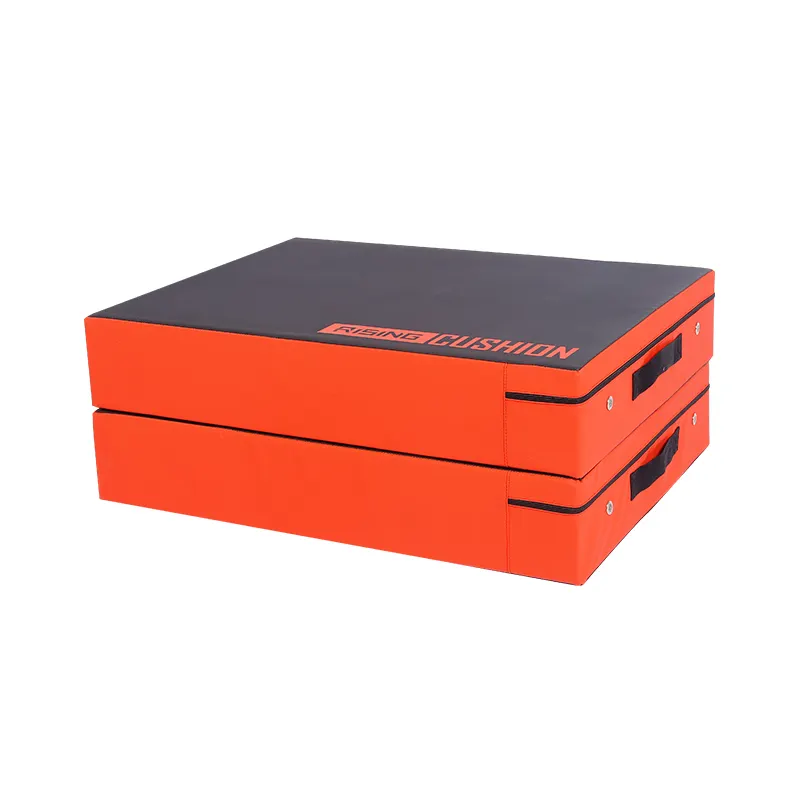Engineering Excellence: The Manufacturing Process Behind Commercial-Grade Fitness Equipment
The commercial-grade fitness equipment industry demands more than just attractive designs - it requires engineering precision, durable materials, and manufacturing expertise to withstand years of heavy use. While many manufacturers focus solely on the finished product, true quality begins long before assembly with carefully selected materials and proven production methods. This exploration goes beyond surface-level features to examine what separates premium commercial-grade fitness equipment from consumer-grade alternatives at every stage of creation. From metallurgical specifications to stress testing protocols, we'll reveal how industry-leading manufacturers combine advanced engineering with hands-on craftsmanship to deliver equipment that performs reliably in high-traffic gym environments.
Material Selection for Commercial-Grade Fitness Equipment
High-Strength Steel Alloys for Structural Components
The foundation of durable commercial-grade fitness equipment begins with proper material selection, particularly for weight-bearing components. Manufacturers specify low-carbon steel alloys with precise yield strengths and elongation properties to handle dynamic loads without deformation. Structural tubing typically uses 11-gauge or thicker steel with a minimum yield strength of 50,000 psi for frames and weight stacks. Critical stress points incorporate reinforced gusseting and box-section designs that distribute forces evenly. Unlike consumer equipment that may use thinner gauge materials to reduce costs, true commercial-grade fitness equipment maintains material specifications that account for years of constant use in gym environments. The steel undergoes multiple quality checks including chemical composition analysis and mechanical testing before entering production.
Commercial-Grade Upholstery and Impact-Resistant Composites
Contact surfaces on commercial-grade fitness equipment require specialized materials that maintain integrity despite heavy use. High-density foam cores (minimum 2.5 lb/ft³ density) resist permanent compression while wrapped in antimicrobial vinyl that withstands cleaning chemicals and abrasion. Weight-bearing components utilize glass-filled nylon composites rather than standard plastics for selectorized parts and pulley housings. These material choices ensure commercial-grade fitness equipment maintains both functionality and appearance despite the wear of daily gym use. Manufacturers conduct accelerated wear testing on all contact materials, simulating years of use in controlled environments to verify durability claims. The result is equipment that looks and performs like new despite the rigors of commercial settings.
Precision Manufacturing Processes
Computer-Numerical-Controlled Fabrication
Modern commercial-grade fitness equipment production utilizes CNC machining centers that achieve tolerances within 0.005 inches for critical components. Laser cutting systems profile steel plates with precision that minimizes secondary machining operations. Robotic welding cells produce consistent, full-penetration welds at every joint using programmed parameters that account for material thickness and joint configuration. This automated approach ensures every piece of commercial-grade fitness equipment meets identical specifications regardless of production volume. The digital workflow also allows for efficient customization - CAD models can be adjusted for special configurations without sacrificing the precision of mass-produced items. Quality control systems track every component through the manufacturing process, maintaining complete traceability from raw material to finished product.
Assembly Line Quality Assurance Protocols
The assembly process for commercial-grade fitness equipment incorporates multiple verification stages before products ship. Torque sensors confirm proper fastener tension on all critical joints while laser alignment tools verify precision positioning of moving components. Pneumatic testing checks hydraulic and pneumatic systems for leaks at pressures exceeding normal operating ranges. Every piece of commercial-grade fitness equipment undergoes functional testing that simulates actual use conditions rather than simple operational checks. These rigorous protocols, combined with the precision of computer-controlled fabrication, result in equipment that delivers consistent performance across entire product lines. The attention to detail during assembly explains why premium commercial-grade fitness equipment operates smoothly from the first use and maintains that performance over years of service.

Engineering and Design Considerations
Biomechanical Optimization for Commercial Use
Designing commercial-grade fitness equipment requires more than duplicating consumer models with heavier materials. Engineers analyze force vectors and movement patterns specific to commercial gym environments where equipment sees constant use by individuals of varying sizes and strength levels. Adjustability ranges extend beyond typical consumer models to accommodate diverse user populations. Reinforcement strategies account for potential misuse or overloading that occurs in unsupervised settings. The engineering process includes finite element analysis to identify stress concentrations and iterative prototyping to refine designs before production. This scientific approach to commercial-grade fitness equipment development results in products that provide safe, effective workouts while withstanding the demands of high-traffic facilities.
Ergonomic Refinements for Professional Settings
Commercial-grade fitness equipment incorporates subtle ergonomic enhancements that improve the training experience for serious athletes and casual users alike. Handle diameters optimize grip efficiency for both strength movements and endurance training. Seat contours provide proper pelvic positioning without restricting movement ranges. Adjustment mechanisms use commercial-grade bearings and positive stops that maintain precise settings despite frequent changes. These refinements emerge from extensive user testing in actual gym environments rather than laboratory simulations. The result is commercial-grade fitness equipment that feels intuitively correct to users while providing the durability needed for constant adjustments in busy facilities.
Testing and Validation Procedures
Structural Load Testing Beyond Rated Capacities
Responsible manufacturers subject commercial-grade fitness equipment to destructive testing that validates engineering assumptions. Frames undergo static loading at 300-400% of maximum rated capacity while engineers monitor for any deformation or stress concentrations. Impact testing simulates accidental drops of weight plates or abusive loading conditions that might occur in gym environments. Fatigue testing machines cycle moving components through hundreds of thousands of repetitions to identify potential wear points before production begins. These extreme tests inform design improvements that enhance the durability of all commercial-grade fitness equipment leaving the factory. The testing data provides empirical evidence of safety margins that give facility owners confidence in their investment.
Real-World Usage Simulation
Beyond laboratory testing, premium commercial-grade fitness equipment undergoes real-world validation in test facilities that mimic actual gym environments. Equipment sees continuous use by trainers and athletes who provide feedback on performance, adjustability, and durability. Manufacturers monitor wear patterns on pivot points, guide rods, and upholstery to identify potential improvements. This hands-on evaluation complements technical testing to ensure commercial-grade fitness equipment meets the needs of both facility operators and members. The combination of scientific testing and practical experience results in equipment that performs as well in year five as it did on installation day.
Customization for Commercial Applications
Facility-Specific Configuration Options
While maintaining core engineering principles, leading manufacturers offer customization options for commercial-grade fitness equipment to match facility requirements. Dimensional adjustments accommodate unique space constraints without compromising equipment functionality. Color selections extend beyond standard offerings to match facility branding schemes. Control panel interfaces can be tailored to specific user demographics or training philosophies. These custom options demonstrate the flexibility of well-engineered commercial-grade fitness equipment to meet diverse facility needs while maintaining the durability and performance of standard models. The customization process maintains all original equipment testing and validation protocols to ensure modified units meet the same quality standards.
Brand Integration Without Compromise
Commercial facilities increasingly view fitness equipment as an extension of their brand identity. Manufacturers now offer sophisticated branding options that don't compromise equipment integrity. Laser etching creates permanent markings that withstand cleaning and use. Custom embroidery techniques produce durable logos on upholstered surfaces. Some manufacturers even provide full graphic wraps for equipment consoles that resist peeling and fading. These branding opportunities allow facilities to create cohesive environments while maintaining the full performance and durability of commercial-grade fitness equipment. The integration occurs during manufacturing rather than as aftermarket modifications, preserving warranty coverage and finish durability.
FAQ
What distinguishes commercial-grade fitness equipment from consumer models?
Commercial-grade fitness equipment uses heavier materials, more robust construction methods, and undergoes rigorous testing for high-traffic environments. The engineering accounts for constant use by diverse users while maintaining performance over years of service.
How long should commercial-grade fitness equipment last in gym settings?
Properly maintained commercial-grade fitness equipment typically delivers 7-10 years of reliable service. Structural components often last longer with periodic replacement of wear items like upholstery and cables.
Can commercial-grade fitness equipment be customized for specific facilities?
Yes, reputable manufacturers offer various customization options including dimensions, colors, and branding while maintaining original equipment performance standards and durability.
What testing should commercial-grade fitness equipment undergo before purchase?
Look for equipment tested beyond rated capacities for static loads, impact resistance, and fatigue life. Reputable manufacturers provide testing documentation validating their durability claims.
Table of Contents
- Engineering Excellence: The Manufacturing Process Behind Commercial-Grade Fitness Equipment
- Material Selection for Commercial-Grade Fitness Equipment
- Precision Manufacturing Processes
- Engineering and Design Considerations
- Testing and Validation Procedures
- Customization for Commercial Applications
-
FAQ
- What distinguishes commercial-grade fitness equipment from consumer models?
- How long should commercial-grade fitness equipment last in gym settings?
- Can commercial-grade fitness equipment be customized for specific facilities?
- What testing should commercial-grade fitness equipment undergo before purchase?


